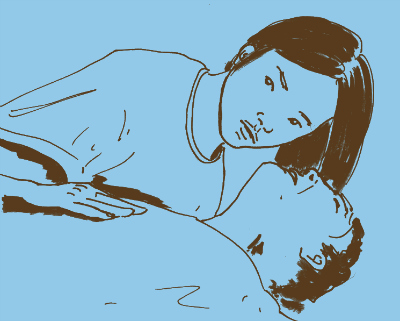 The Supreme Court’s judgment in Dr. Balram Prasad and Others v. Dr. KunalSahaand Others, on appeal from a decision of the National Consumer Disputes Redressal Commission, addressed key issues related to the payment of compensation in medical negligence cases.
The Supreme Court’s judgment in Dr. Balram Prasad and Others v. Dr. KunalSahaand Others, on appeal from a decision of the National Consumer Disputes Redressal Commission, addressed key issues related to the payment of compensation in medical negligence cases.
The brief facts are in this report. Liability per se had already been decided by the Supreme Court in a previous round of litigation in 2009.The Court had then directed the Commission to arrive at a just figure of compensation. This time round, in a 210-page judgment, the Court increased the compensation awarded — from the Rs. 1.55 crore awarded by the Commission to Rs. 6.08 crore, perhaps the largest ever in such a case.
 The Court’s observations on the ‘multiplier method’ are a key takeaway from the judgment. The multiplier method calculates compensation based on the estimated future income of the deceased. It depends on the age of the deceased at the time of death, since it multiplies the estimated figure of annual income by the estimated number of years the deceased would have been earning for. Tracing the history of this method to the concept of no-fault liability under the Motor Vehicles Act, 1988, the Court relied on precedent (para 65) to note first, the need for flexibility in its application generally and the inappropriateness of its strict application in the context of medical negligence where fault has been established (since the method was specifically designed for redressal of no-fault liability claims). After that, the Court re-evaluated the compensation for loss of future income of the deceased. Here, the judgment once again extolled the need for a case-by-case approach, and added a thirty per cent to the projected future earnings to account for possibilities of future advancement and the ‘future potential’ of the deceased.
The Court’s observations on the ‘multiplier method’ are a key takeaway from the judgment. The multiplier method calculates compensation based on the estimated future income of the deceased. It depends on the age of the deceased at the time of death, since it multiplies the estimated figure of annual income by the estimated number of years the deceased would have been earning for. Tracing the history of this method to the concept of no-fault liability under the Motor Vehicles Act, 1988, the Court relied on precedent (para 65) to note first, the need for flexibility in its application generally and the inappropriateness of its strict application in the context of medical negligence where fault has been established (since the method was specifically designed for redressal of no-fault liability claims). After that, the Court re-evaluated the compensation for loss of future income of the deceased. Here, the judgment once again extolled the need for a case-by-case approach, and added a thirty per cent to the projected future earnings to account for possibilities of future advancement and the ‘future potential’ of the deceased.
While substantively, the Court has decided the case based on existing law, three points stand out. Firstly, there is a constant emphasis on flexibility, context, and regard to the overall circumstances and an eschewal of calculation methods based on rigid formulae. Secondly, rather than relying on doctrine alone, the Court adopted a consequentialist approach. It was comfortable ‘getting its hands dirty’ and addressed issues of inflation adjustment, interest from the date of filing the claim, and even adjusting projected income with currency fluctuations. The emphasis appeared to be on an effective decision rather than on precedent and legal rules alone, an attitude that I would think is laudatory, and particularly appropriate for consumer law.
Despite the private law context of the judgment, I believe it serves the policy objective of demanding due care and attention from the medical community. The nuance and attention in the judgment to context and consequence are also notable.
(Prateek Andharia is a final year law student at NALSAR University of Law, Hyderabad.)
